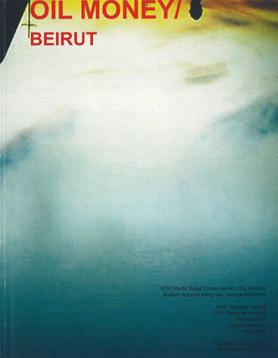Where does the Oil Money go? (Beirut)

Students: Roberta Margnetti
Location: Beirut
Date: October, 2009
Type: Research project, student work
Background
After 16 years of civil war that ended 1991, Beirut was ready for reconstruction. Maybe counterintuitive, the war had not only been a time of pure and utter destruction, while the post war era representing a phase of construction. On the contrary: it is often said that most of the destruction to the urban fabric occurred actually after the end of the fighting. The leading figure in rebuilding (and hence, also demolishing) Beirut after civil war was Rafik Hariri. Having amassed an enormous wealth in Saudi Arabia during the war years, he became the prime minister of Lebanon in 1992 and founded the private company Solidere with the task of reconstructing the central business district of Beirut (BCD). Due to his close relationship to the Saudi king and to Saudi investors in general, much of the investment that has flown into Beirut since the civil war is of Saudi source. While the Lebanese capital is (re)constructed by Saudi funds, in Damascus mostly Qatari and Kuwaiti investors are active. While Qatari-Syrian joint investment companies have constructed several large-scale projects throughout the country, a Kuwaiti private investment co. has recently started construction works at the Kiwan tourist project in downtown Damascus, encompassing luxury hotels and several tourist facilities.
Themes
Lebanon and Syria have become a playground for investors from the gulf, investing oil money in large real estate projects. The investors are having a big impact, not only on the built environment of the cities, but also on the urban culture and their social fabric. Not only has the skyline of Beirut already been transformed fundamentally, a completely new city will be built in front of the Beirut Central District on reclaimed land, thereby pushing the former city center into the ‘second row’. The impact of oil money on Damascus has so far been visually less dramatic, but many development projects are ongoing that will change the urban culture fundamentally, especially in terms of shopping habits and residential spaces. Besides the physical changes transforming the cities, the Gulf nations are also having a cultural and social impact on Beirut and Damascus. Maybe the most visible materialization of this development is the construction of the Mohammad Al-Amin Mosque on Beirut’s Martyrs’ Square, bringing a picture postcard image of religion into a part of the city which was previously known for its political significance and as a center of recreation and entertainment.
Project
What is the urban idea of a ‘Saudi City’? What is the urban idea of a ‘Qatari City’? Can we trace the impact of “Gulf culture” and investment of oil money in the cities of Beirut and Damascus? What are the techniques of urban production in the era of neo-liberal investment? Compare these development projects within an international context. Describe the relationship to the repercussions of 9/11.

